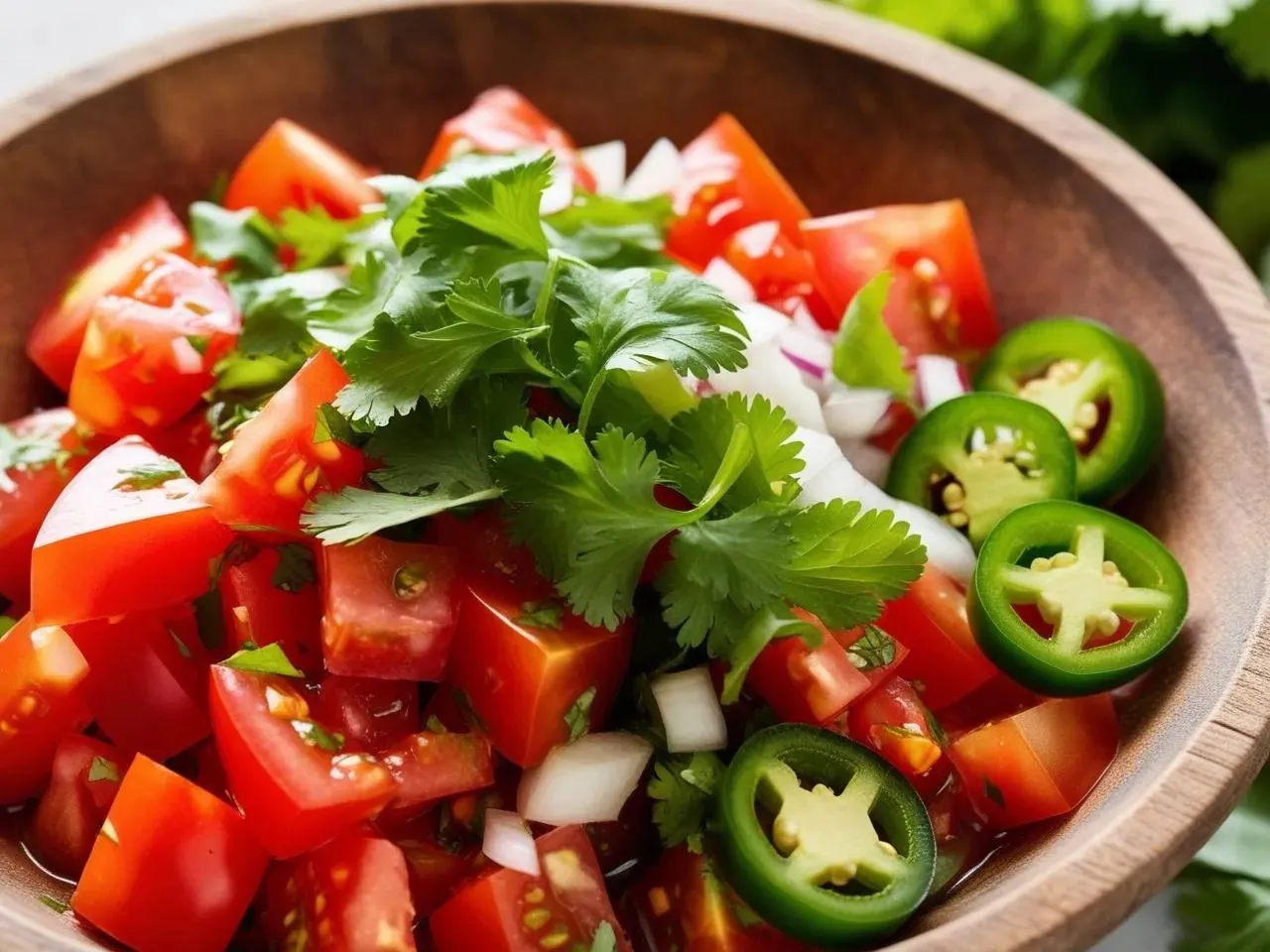Published on May 15, 2025
Last updated: May 15, 2025 · ⏱ 2 min read
Fresh & Chunky Tomato Salsa in 5 Minutes

The Importance of Fresh Ingredients in Tomato Salsa
When it comes to crafting an unforgettable tomato salsa, the quality of your ingredients is paramount. Fresh garden produce not only boosts flavor but also enhances the overall nutritional profile of your salsa. Choosing the right tomatoes is essential; they should be ripe, juicy, and bursting with flavor. Varieties such as Roma, heirloom, or beefsteak tomatoes are great options due to their rich taste and firm texture.
Selecting the Right Tomatoes
Tomatoes can be the star of your salsa, so it’s crucial to select the best ones. A ripe tomato should feel slightly soft when you gently squeeze it and have a vibrant color. Roma tomatoes are a popular choice for salsas due to their lower moisture content, making them less watery. Heirloom varieties offer unique flavors and colors, adding visual appeal to your dish. When you choose tomatoes from your garden, you’ll enjoy the freshest taste possible.
Complementary Flavors from the Garden
To create a well-rounded salsa, you need to incorporate flavors that complement the tomatoes. Fresh herbs like cilantro, parsley, or basil can add aromatic notes, while onions bring a slight crunch and depth. Garlic, whether minced or roasted, introduces a savory element that elevates the salsa's profile. Additionally, peppers (like jalapeños for heat or bell peppers for sweetness) can contribute varied textures and flavors. Each ingredient from your garden can play a unique role in crafting a balanced salsa.
Preparing Your Ingredients
Preparation is key to a successful salsa. Start by washing your tomatoes and any other garden produce thoroughly. Remove the stems and core from the tomatoes, then chop them into uniform pieces to ensure even distribution of flavor. For onions and garlic, finely dice them to avoid overpowering the salsa with large chunks. If you’re using hot peppers, be cautious with the seeds, as they can add significant heat. Adjust the amount according to your heat preference.
Crafting the Perfect Salsa Recipe
Creating a basic salsa is straightforward and allows for personal adjustments based on your tastes. Begin with the chopped tomatoes as your base. Mix in diced onions, minced garlic, and finely chopped herbs. Depending on your preference, add salt to taste, a squeeze of lime juice for acidity, and a dash of olive oil for richness. If you enjoy a spicy kick, incorporate finely diced jalapeños or your choice of hot pepper. Stir everything together and let the salsa sit for at least 30 minutes; this resting period allows the flavors to meld beautifully.
Enhancing Your Salsa with Additional Ingredients
Once you’ve mastered a basic tomato salsa, consider experimenting with additional ingredients to create unique variations. For a fruity twist, add diced mango, peach, or pineapple to introduce sweetness and complexity. If you prefer a smoky flavor, try incorporating roasted tomatoes or peppers. For a tangy touch, a splash of vinegar or diced pickles can work wonders. Each addition offers a new flavor dimension that can transform your salsa into something truly special.
Serving Suggestions for Your Salsa
Tomato salsa is incredibly versatile and can enhance a variety of dishes. Serve it as a dip alongside tortilla chips for a classic appetizer. It pairs beautifully with grilled meats, adding freshness to burgers or tacos. Use it as a topping for nachos or baked potatoes, or mix it into your favorite bean salad for added zing. The possibilities are endless, making salsa a delightful addition to any meal.
Storing Your Salsa
If you find yourself with leftover salsa, proper storage is important to maintain freshness. Store your salsa in an airtight container in the refrigerator, where it can last for up to a week. However, be mindful that the flavors may continue to develop and change over time. If you want to preserve your salsa for a longer period, consider freezing it in freezer-safe bags. Just remember to leave some space for expansion as it freezes. When you’re ready to enjoy your salsa, simply thaw it in the refrigerator overnight.
Health Benefits of Homemade Salsa
Making salsa at home not only allows you to control the ingredients but also provides numerous health benefits. Fresh tomatoes are an excellent source of vitamins C and K, as well as antioxidants like lycopene, which has been linked to various health advantages. The addition of herbs and vegetables increases the fiber content and provides essential nutrients. By using fresh, organic produce from your garden, you can create a nutritious condiment that enhances your meals without added preservatives or unhealthy ingredients.
Choosing Organic vs. Conventional Ingredients
When it comes to selecting ingredients for your salsa, consider the benefits of choosing organic produce. Organic tomatoes and herbs often have a richer flavor and are grown without synthetic pesticides or fertilizers. If you grow your own vegetables, you can enjoy the peace of mind that comes from knowing exactly how they were cultivated. While organic ingredients may sometimes be more expensive, the investment is worthwhile for the enhanced taste and health benefits they provide.
Incorporating Seasonal Variations
As seasons change, so too can your salsa! In the summer, take advantage of the bounty of fresh tomatoes and peppers. In the fall, consider adding roasted squash or pumpkin for a seasonal twist. In winter, use canned tomatoes to maintain a year-round supply of this vibrant condiment. Each season offers unique flavors and ingredients, allowing you to keep your salsa fresh and exciting throughout the year.
Conclusion: Embracing the Art of Salsa Making
Making tomato salsa with garden-fresh ingredients is a rewarding experience that brings out the best in seasonal produce. From the vibrant colors to the bold, zesty flavors, homemade salsa is a celebration of freshness and creativity in the kitchen. Whether you prefer it mild or with a fiery kick, salsa can be tailored to suit your taste and the ingredients you have on hand.
Beyond just a dip for chips, salsa is a versatile condiment that enhances tacos, grilled meats, salads, and more. By embracing the art of salsa making, you not only enjoy a healthier, preservative-free alternative to store-bought versions, but also take pride in creating something delicious from scratch. So grab your tomatoes, chop your herbs, and start stirring up a little magic in your kitchen.
FAQs: Homemade Tomato Salsa

Written by Soufyan from GrowToGrub
Soufyan is a gardening educator and founder of GrowToGrub. Through simple guides, easy recipes, and practical life hacks, he helps everyday growers turn small spaces into sustainable, delicious, and chemical-free living.


